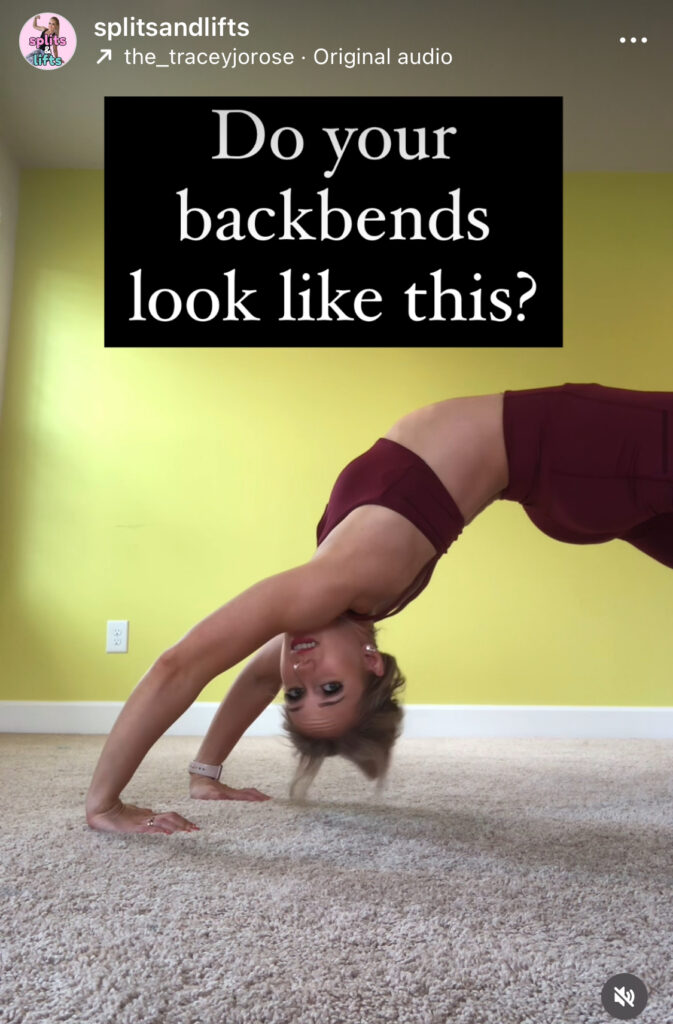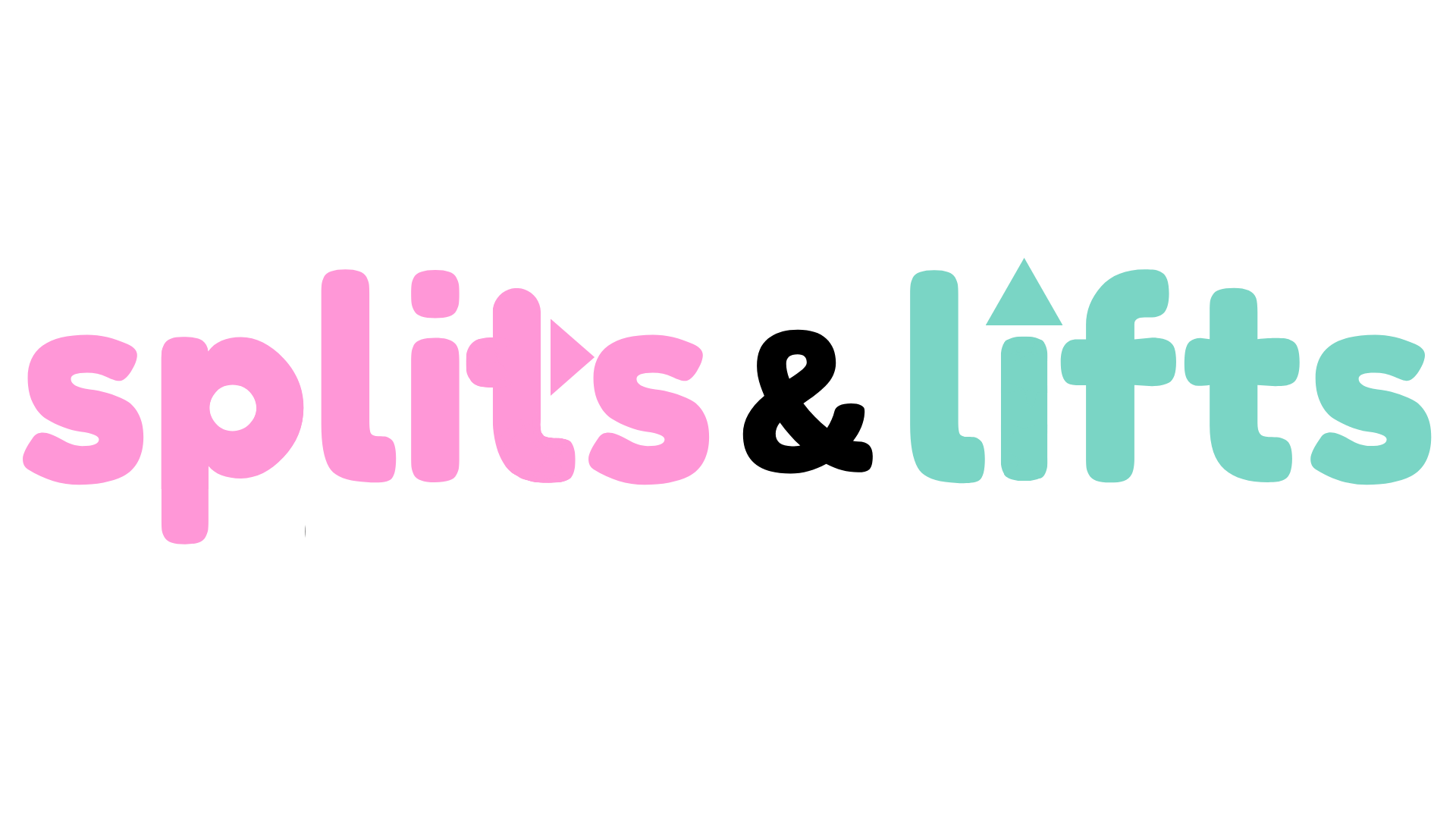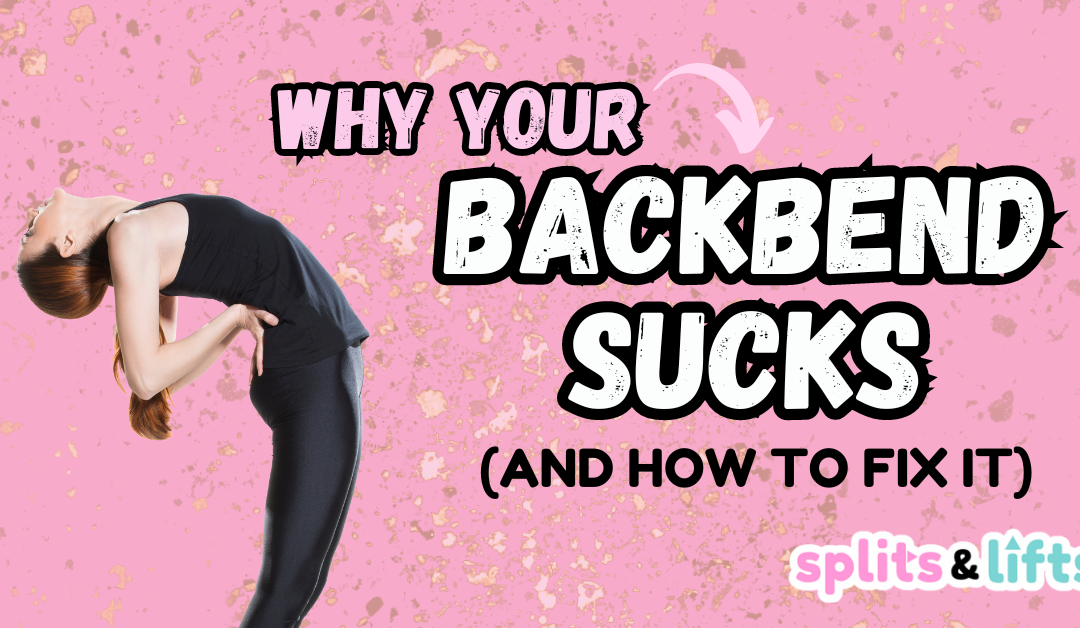Carly Cartwheel is a level 8, crushing the game, but her backbend SUCKS!
She pushes to the limit, but all she walks away with is a sore lower back and something that mayyyybe looks like a backbend… if ya squint 👀
So why is this? Well, there could be a few things at play.
Your shoulders could be why your backbend sucks.
This is USUALLY where you’ll see movement issues, at least. Let’s take one of my recent Insta posts for example:

Now, I was just trying to fake a bad backbend the best I could, but I got in trouble for this one. Let me explain.
The vid shows a stretch I like that targets the mid/low back. It’s genuinely one of my favorites, but y’all were quick to point out if your backbend DOES look like this ⬆️ It’s probably more of a SHOULDER problem.
And you’re right!!
But here’s what got me thinking. Why is it so hard to fake low back flexibility?
Usually, it’s because low back mobility is NOT the issue.
“But my low back is always sore!”
So it’s gotta be that, right? Well, it’s probably playing a role, but not the way you think.
It probably means you have MOST of your mobility there ALREADY, and you’re asking your low back to work overtime to make up for the rest of your spine.
Your low back––or your lumbar spine––is really not meant to take on the impacts of tumbling by itself. However, this is what most gymnasts end up stretching to the max. 😬
So yeah, makes sense that it’s sore!
“If it’s not my low back, what IS it?”
It’s hard to say for certain, but there’s a pretty good chance it’s limited thoracic mobility.
Say what?
In other words, your mid/upper back isn’t moving enough!
There’s actually MORE potential movement to unlock in the upper back than the lower back.
🤓: On average, the upper back has about 30–35º of rotation, whereas the lower back only has about 10º! (NASM).
You also may be doing too much in one direction.
There’s a solid difference between back extension and back rotation.
Back extension is your typical backbend, walkover, handspring, etc. Gymnasts do it all the time. And too much of that extreme flexion/extension combo can contribute to spondylolysis, spondylolysthesis, and other not-so-fun stuff. ❤️🩹
So a little more focus on rotation strength can help support all that bendy nonsense we have to do.
You’ll find a lot of this emphasis on improving thoracic mobility and strength in my Strong Backs program (coming soon!)

“Back to the Insta post. Why give me that stretch?”
First off, you gotta use some context clues. Never go into any exercise or stretch blindly.
I’m not hand-delivering my stretches to you, reader. The algorithm is good, but it ain’t that good.
The only people I’m handing out stretches to personally are those using my custom programs.

But I’ll tell ya why I like the stretch in that Instagram post. I personally hold a lot of tension in my mid/lower back after tumbling. There’s a lot of compressive forces going on, and it adds up!
Even as someone who IS flexible now, my backbends end up looking like the screenshot when I’m particularly tight––even though it’s not my shoulders.
“Wait a sec, so why is it showing up in your shoulders?”
Now here’s the tricky part. The body works like a chain. If you ask your body to do something, it’s gonna figure out how to do it––but something’s gonna have to give.
For instance, if my mid/low back is tight, I still have to bend it to get into a backbend. There’s no way around it. But that stiffness might end up showing up elsewhere (i.e. my shoulders & upper back).
“Last question. What if it IS your shoulders?”
I thought you’d never ask!
If your shoulders are tight, it again could have a bit to do with your upper back mobility. The shoulder is HEAVILY affected by the bigger muscles that surround it.
Two of those big muscles are your lats (the wing muscles on your back).
The lats are the shoulder-closer muscles. So if they get overused, it gets tricky to fully shoulder-open (pretty important for backbends!).
Foam rolling before practice can give you some temporary extra range-of-motion, but to make it permanent? That’s where training thoracic mobility comes back into play.
If you’re ready to start improving that thoracic mobility, shoulder opening, and more, get ready for my Strong Backs program!
It’ll be launching soon, so I’m excited to see y’all in the app ✨

